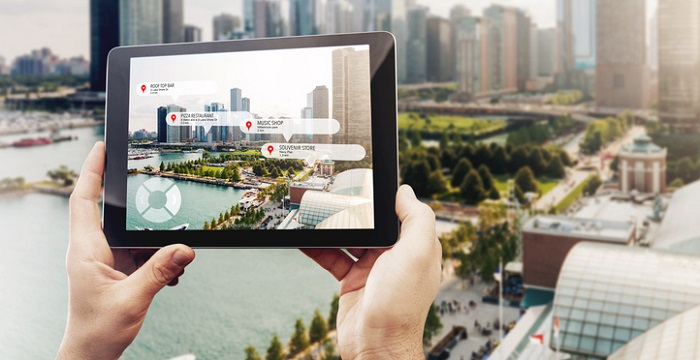Augmented reality (AR) combines real-life environments with virtual reality. Brands and marketing teams are increasingly realizing AR could help build much-needed buzz around events.
Promoting movie releases with AR
The popularity of streaming sites means many people would rather sit at home and watch movies than go to the theater. With that in mind, the marketing teams responsible for movie premieres often depend on AR to drum up interest among their target audiences.
An AR game called “Jurassic World Alive” gives people new ways to interact with their mobile devices that simultaneously promotes the upcoming release of the film “Jurassic World: Fallen Kingdom.” Walmart and AMC Theatres are both spurring interest in the game by providing users with ways to unlock more content during a dedicated window of time surrounding the film’s theatrical debut.
Facebook also has technology that allows people to aim their phones at movie posters to activate interactive AR content, and a couple of films have reportedly already used it.
IBM also got in on the AR game when it informed people about unsung heroes of the STEM field to promote the movie “Hidden Figures.”
Spurring interest in limited-time events
Car brands periodically have sales events that coincide with times when people are more likely to buy vehicles. For example, manufacturers may plan those sales pushes to happen around the holiday season or near the time of college graduations.
During the 2017 holiday season, Honda spread the word about its “Happy Honda Days” sales event and used AR to spread promote something else: end-of-the-year cheer for hospitalized kids.
Participating children received electronic versions of holiday cards while in their hospital rooms, viewed on iPads. The AR experience brought snowmen, icicles and other winter-themed items right into their rooms. The experience ended with greetings people submitted through Honda’s social media channels, as well as those extended by hospital staff.
Honda also posted a video on its social media feeds that gave the world a glimpse of what the children saw. For each “Like” or “Love” reaction on Facebook, Honda donated $1 — up to a total of $100,000 — to the Children’s Hospital of Orange County and the Pediatric Brain Tumor Foundation.
Related Social Gamification for Live Events
This is an excellent example of how Honda tied this AR campaign to its December sales event, and thereby attracted more interest in the brand, without blatantly attempting to urge people to purchase cars.
Other automotive brands have experimented with bringing AR apps to trade shows to get people interested in their latest offerings. This approach lets brands help people experience products without needing the physical building space cars take up.
Since there are so many AR apps for cell phones, it’s becoming easier for people to enjoy AR from wherever they are instead of going to specific places. Not too long ago, virtual experiences were only available for people who strapped on headsets. But, unlike virtual reality, AR often allows people to momentarily escape their worlds on their smartphones without any specialized equipment.
As smartphone technology becomes more advanced, AR technology will become even more accessible than it is now.
Using photos to boost engagement
People regularly use photos to share experiences with their friends, so it’s not surprising event marketing with AR frequently involves branded photo overlays and special booths.
Hypno, a company with one of the first GIF mobile phone photo apps featuring looping social video, pivoted its business model and launched a handheld, orb-shaped camera called The Eye. It lets people take selfies at events, and Hypno has brought it to more than 3,500 gatherings since the camera’s 2017 launch.
Since Hypno has a portable device, it supports one way to successfully bring AR to an event such as a trade show. Providing attendees with the equipment they need to engage in AR experiences brings them enjoyment without making them download apps.
Related: Creating Retail Experiences With Social Gamification
However, some people don’t mind downloads, especially if they relate to a nationwide event. Nissan partnered with the NFL and Bud Light to use AR photo apps to promote the start of football season with team-specific photo overlays and opportunities to let fans “paint” their faces in a team’s colors.
Even when football lovers couldn’t make it to the season kickoff in person, they could at least show their fandom with the apps and display it for their friends to see across social media channels.
AR offers endless possibilities for marketers
The case studies here prove there’s virtually no limit on the ways to incorporate AR into marketing campaigns. The key is to do it in ways that connect with an audience and support the overall goals of an event. When those things happen, AR becomes an integral part of the marketing mix, and not just an afterthought meant to solely attract short-term attention.







